
MAD Architects has unveiled its design for the renovation and adaptive reuse of an old cement factory in Shanghai. The ‘Wanmicang’ warehouse sits on the south side of the Shanghai Zhangjiang Cement Factory grounds and has been reimagined by MAD as a “three-dimensional hierarchy of time and physical dimensions through the juxtaposition of old and new structures.”

Having ceased production in 2013 after decades as one of Shanghai’s largest cement factories, the site has been the subject of several commissions by architects aiming to preserve and reuse historical buildings while repositioning the site for research, cultural, commercial, and creative uses. Subsequently, MAD’s approach to the Wanmicang warehouse was to preserve the site’s industrial fabric while repurposing the site as a multifunctional public waterfront space holding culture, creativity, commercial, and office functions.
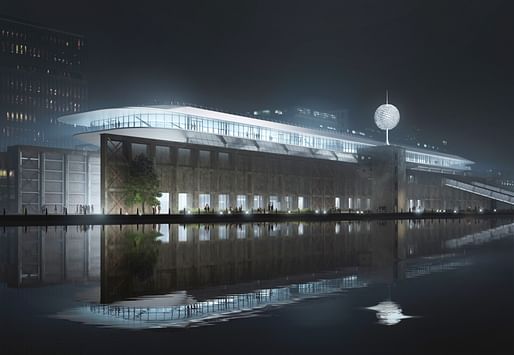
“Industrial heritage is preserved and utilized not only because of the historical memories it carries, but more importantly, because it gives the future a sense of history,” said MAD founding partner Ma Yansong about the team’s approach. “So we don't need to celebrate and consolidate industrial aesthetics here but rather focus on the spirit of the contemporary and the future.”
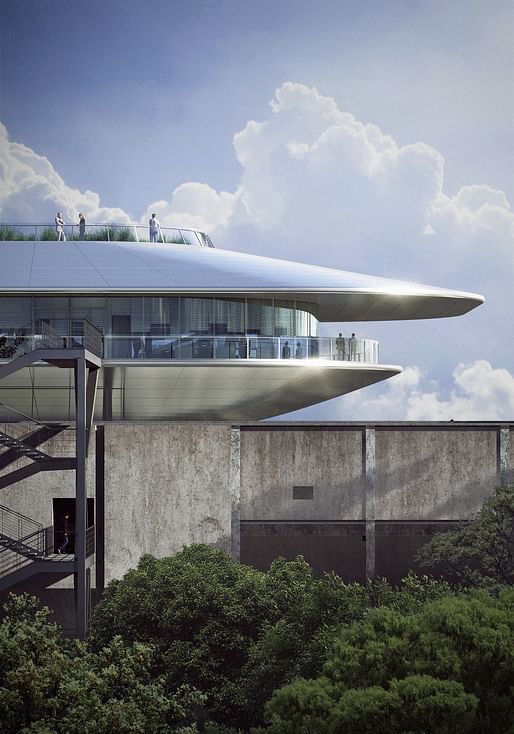
The renovation sees the warehouse’s existing roof replaced by an ark-like volume ‘floating’ above the building. The volume is clad in a smooth metal finish to contrast with the rough concrete facade of the building, which is to be repaired and reinforced. Meanwhile, the west wall is to be removed and replaced by a full-face suspended glass curtain wall, set back from the original wall to create an outdoor urban space.

The floating effect of the ark is to be achieved through the addition of new columns, floor trusses, spanning trusses, and large spanning beams. Old walls are to be reinforced and repaired using studs, steel wire mesh, and steel frames in order to “retain the sense of historical vicissitudes to the maximum extent.”

Inside, the team has sought to capitalize on the long, narrow, tall volume to create an “interior space with a great sense of depth.” Visitors entering the building are greeted by an unfolding giant ark, with a metal ladder leading to the roof. Underneath the ark, a tiered garden is proposed to cater to creative, cultural, and catering businesses.
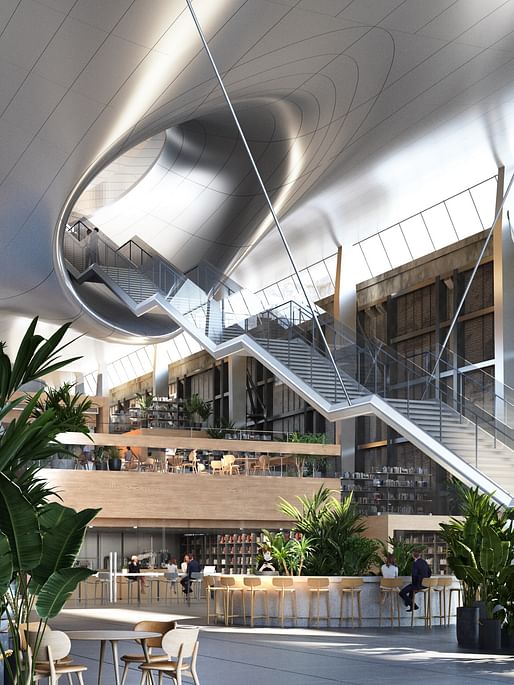
The ground floor of the building opens onto the adjacent waterfront, while a corridor running through the middle of the building connects a park on one side to the waterfront on the other. Meanwhile, the rooftop is intended as an additional public space, with the eaves of the ark tilting down to “minimize the oppressive feeling that the height of the building may have on the banks of the Chuanyang River.”
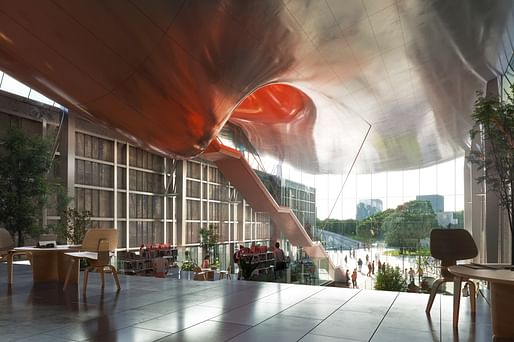
The renovation is expected to be completed by 2026. News of the scheme comes weeks after MAD designed a culture and arts center in Shanghai inspired by mountainous tea fields and months after photos emerged of the firm’s The City of Time installation at the Aranya Theater Festival.
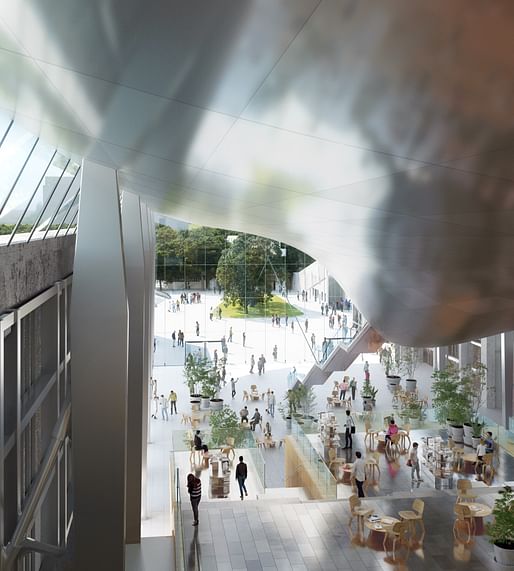
In June, MAD announced that its new China Philharmonic Concert Hall in Beijing was nearing completion, while in May, the firm unveiled plans for the tallest tower in Quito, Ecuador. Meanwhile, this week’s edition of our ongoing Job Highlights series saw us explore an open role at the firm’s LA office for their next Head of PR.
No Comments
Block this user
Are you sure you want to block this user and hide all related comments throughout the site?
Archinect
This is your first comment on Archinect. Your comment will be visible once approved.